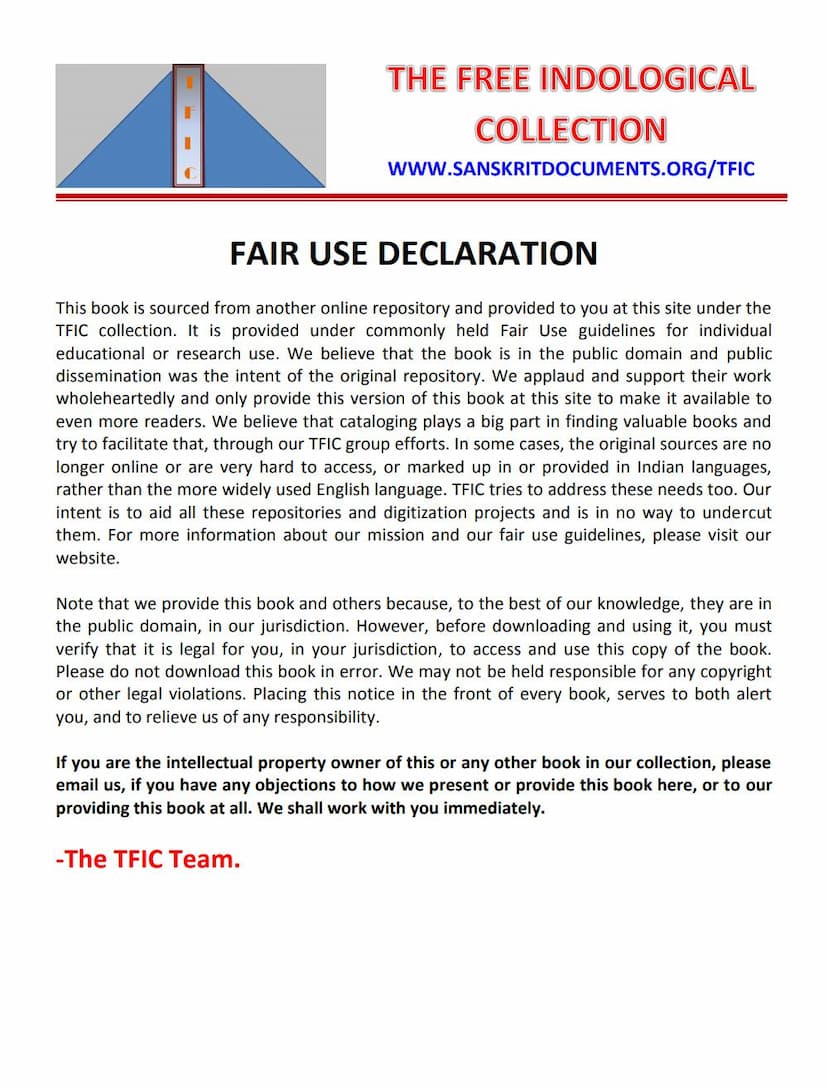Tattvagyan
Added to library: September 2, 2025

Summary
This document is the Gujarati text of Tattvagyan (The Science of Reality) by Shrimad Rajchandra, published by Shrimad Rajchandra Ashram. The catalog link provided is for the JainQQ platform.
The book is a compilation of the teachings and aphorisms of Shrimad Rajchandra, a prominent Jain philosopher and poet. It aims to guide the reader towards spiritual knowledge and liberation (moksha). The content is vast and covers a wide range of spiritual and ethical principles, presented in both prose and verse.
Here's a breakdown of the book's content based on the provided index and pages:
Key Themes and Sections:
-
Prose Section: This section is extensive and includes various short writings, verses, and pronouncements covering a multitude of topics. These include:
- "Pushpamala" (Garland of Flowers): A series of reflections and guidance on daily conduct, self-awareness, and spiritual progress, emphasizing the importance of time management, self-reflection, and taking responsibility for one's actions. It encourages introspection and the cultivation of virtues.
- "Mahaneeti" (Great Ethics): This section outlines a comprehensive code of conduct for spiritual aspirants, covering principles like truthfulness, detachment, self-control, non-violence, and right livelihood. It offers numerous guidelines for daily life and spiritual practice.
- "Battis Yog" (Thirty-two Yogas/Practices): This section details various practices and disciplines essential for spiritual growth, such as the importance of a guru, study of scriptures, detachment, and the development of virtues like contentment and equanimity.
- "Smriti ma Rakhva Gy Mahavaky" (Great Sayings to Keep in Memory): A collection of profound and concise statements offering essential spiritual wisdom.
- "VachanAmrut" (Nectar of Words): Short, impactful sayings that capture the essence of Shrimad Rajchandra's teachings on various aspects of spiritual life, including the nature of happiness, the importance of self-knowledge, and the pitfalls of attachment.
- Guidance on Conduct and Character: Many sections offer advice on how to behave in various situations, the importance of introspection, the consequences of actions, and the path to self-realization. This includes guidance on overcoming vices, cultivating positive qualities, and understanding the true nature of reality.
- The Nature of the Soul and Karma: The text delves into the Jain understanding of the soul, its relationship with karma, and the processes of bondage and liberation. It emphasizes that karma is an inert substance and the soul's interaction with it determines its destiny.
- The Path to Liberation: The core message revolves around understanding the true nature of the self, detaching from worldly possessions and desires, cultivating virtues, and seeking the guidance of a true spiritual master (sadguru).
-
Poetic Section: This section features various poems and devotional songs, often expressing deep spiritual longing, praise for Tirthankaras and enlightened beings, and philosophical reflections. This includes:
- "Prabhuprayer" (Prayer to the Lord): Devotional prayers expressing reverence and seeking divine guidance.
- Reflections on Samsara (Worldly Existence): Poems that describe the illusory nature of worldly pleasures and the suffering inherent in the cycle of birth and death.
- Praise for Monks and Spiritual Masters: Verses that honor the path and practices of ascetics and spiritual guides.
- Ethical and Philosophical Verses: Poems that encapsulate spiritual principles, moral conduct, and the quest for truth.
Core Philosophical Underpinnings (Jain Perspective):
- Ahimsa (Non-violence): The principle of non-violence is central, encompassing not just physical violence but also mental and verbal harm.
- Detachment (Vairagya): Cultivating detachment from worldly possessions, relationships, and desires is presented as crucial for spiritual progress.
- Self-Control (Samyama): The mastery of the senses, mind, speech, and body is emphasized as essential for liberation.
- Self-Knowledge (Atma-gyan): Understanding the true nature of the soul as distinct from the body and the external world is the ultimate goal.
- Right Faith, Right Knowledge, Right Conduct (Samyak Darshan, Samyak Gyan, Samyak Charitra): These three jewels of Jainism are presented as the path to liberation.
- The Role of the Guru: The importance of a qualified spiritual teacher (sadguru) is repeatedly stressed as indispensable for understanding true spiritual principles.
- Karma: The concept of karma and its influence on one's destiny is a significant theme, with an emphasis on understanding its workings and transcending its effects through spiritual practice.
In essence, "Tattvagyan" is a profound spiritual guide that offers practical advice and philosophical insights for anyone seeking to understand the nature of reality, their true self, and the path to ultimate liberation, deeply rooted in the Jain tradition and illuminated by the wisdom of Shrimad Rajchandra.